The Birthstone of June: Unveiling the Secrets of Pearls

Thanks to their lustrous beauty and rich cultural symbolism, pearls have captivated people's imaginations for thousands of years. From ancient civilizations to modern-day jewelry, pearls have played an important role in human history and have been associated with purity, wisdom, and prosperity. They have also been used in religious rituals, artistic expression, and fashion.
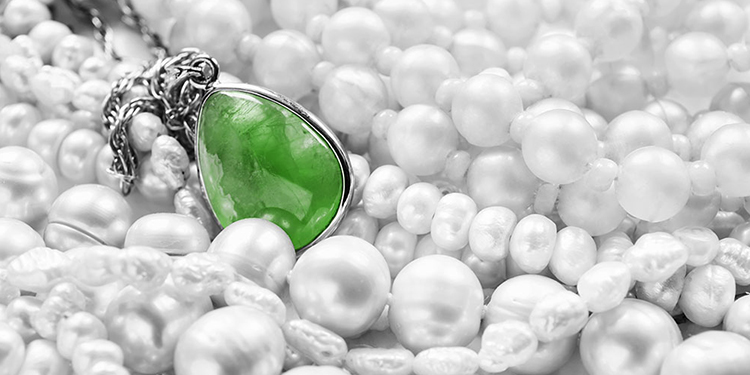
In this article, we will explore pearls' rich history and cultural significance. We will look at how pearls are formed and the different types of pearls that exist. We will also delve into the symbolic meaning of pearls and why they are a popular gemstone for those born in June. Finally, we will discuss how pearls are used in jewelry and offer tips for caring for and preserving your pearl jewelry.
Whether you're a longtime pearl enthusiast or just learning about these captivating gems, this article will give you a deeper understanding of their significance and enduring appeal. So, join us on a journey through the fascinating world of pearls.
What are Pearls?
Definition and characteristics of pearls
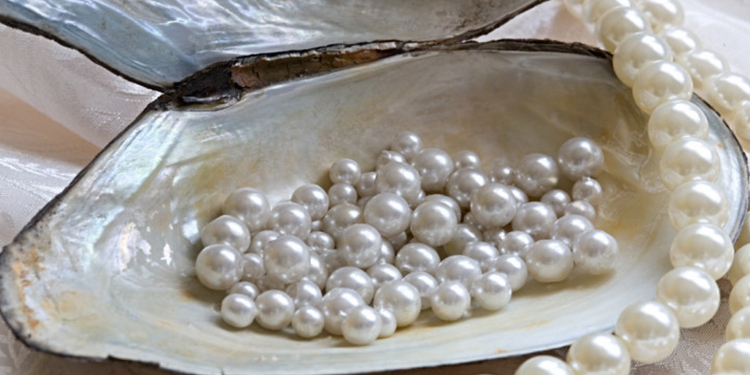
Pearls are formed inside the shells of certain mollusks, such as oysters and mussels. They are composed of calcium carbonate, deposited in concentric layers around an irritant, such as a grain of sand or a piece of tissue. Over time, these layers build up to form a spherical or irregularly shaped pearl.
The quality of a pearl depends on several factors, including its size, shape, luster, color, and surface quality. A high-quality pearl will have a bright, reflective luster, a smooth surface, and a round or nearly round shape. The color of a pearl can range from white to black, with various shades of pink, blue, green, and yellow in between.
Types of pearls and their unique qualities

There are several different types of pearls, each with its unique qualities. Some of the most popular types of pearls include:
Akoya Pearls: These are small, round, white or cream-colored pearls. They are known for their high luster and are often used in classic pearl necklaces and earrings.
South Sea Pearls: These are larger pearls grown in the warm waters of the South Pacific. They come in various colors, including white, silver, and gold, and are highly prized for their size and luster.
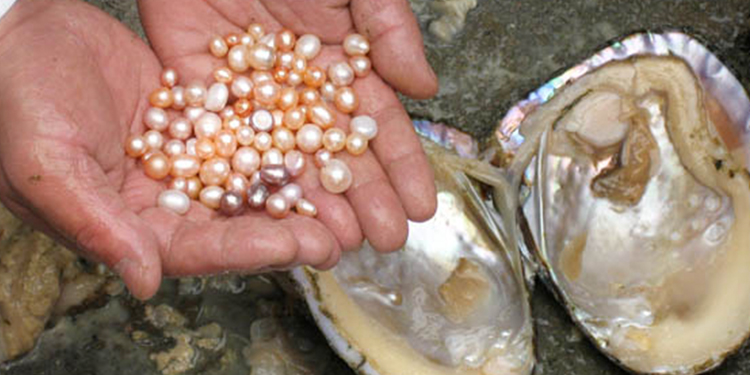
Tahitian Pearls: These are dark-colored pearls grown in the black-lipped oyster. They come in shades of gray, green, and black and are often used in contemporary pearl jewelry.
Freshwater Pearls: These are grown in freshwater mussels and come in a variety of shapes and colors. They are often less expensive than saltwater pearls and are used in a wide range of jewelry styles.
How pearls are formed
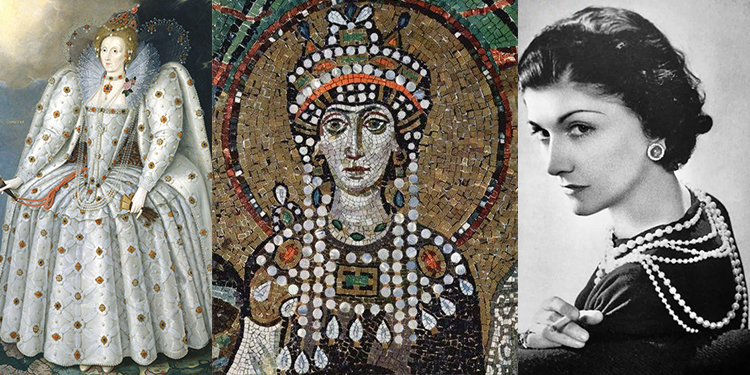
Pearls are formed when a foreign object, such as a grain of sand or a piece of tissue, enters the shell of a mollusk. In response, the mollusk secretes a substance called nacre, which coats the object and builds up in layers over time. This process can take several years, depending on the size and quality of the pearl.
Today, pearls are typically cultured, meaning that they are grown with the help of human intervention. This process involves inserting a small piece of tissue or a bead into the mollusk, the irritant around which the pearl forms. While this process is not entirely natural, it allows for a more consistent and reliable supply of pearls.
The History of Pearls
Early use of pearls in ancient civilizations
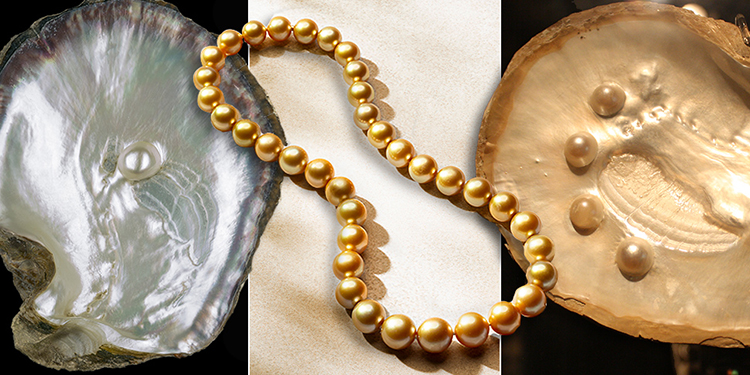
Pearls have been prized for their beauty and rarity for thousands of years. In ancient times, they were highly valued by cultures around the world. In China, for example, pearls were believed to be the tears of dragons and were associated with good luck and prosperity. In ancient Rome, pearls were a symbol of wealth and status and were often worn by members of the aristocracy.
The significance of pearls in different cultures and religions

Pearls have also played an important role in various religions and belief systems. In Hinduism, for example, pearls are associated with the moon and are believed to provide protection and promote wisdom. In Christianity, pearls are mentioned several times in the Bible and are used as a metaphor for the kingdom of heaven. In Islam, pearls symbolize beauty and purity and are often used in jewelry and decorative objects.
The role of pearls in art, fashion, and literature throughout history
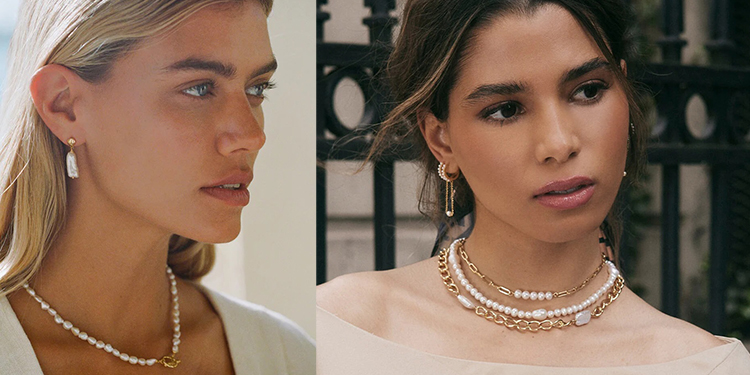
Historically, pearls have been popular in art, fashion, and literature. In Renaissance art, for example, pearls were often depicted in portraits of women as a symbol of beauty and purity. In the 20th century, pearls became associated with the glamour and elegance of Hollywood stars such as Audrey Hepburn and Grace Kelly. Today, pearls continue to be a popular choice in classic and contemporary jewelry and are often used to add a touch of sophistication and elegance to any outfit.
The Meaning of Pearls
The symbolic significance of pearls in different cultures and beliefs

Pearls have long been associated with a range of symbolic meanings across cultures and beliefs. In many cultures, pearls symbolize purity and innocence and are often used in weddings and other ceremonies. In some traditions, pearls are believed to have protective qualities and are used to ward off evil spirits or negative energy. Additionally, pearls are sometimes associated with the moon and are believed to have a calming and balancing effect on the mind and emotions.
Qualities associated with pearls, such as purity, wisdom, and prosperity
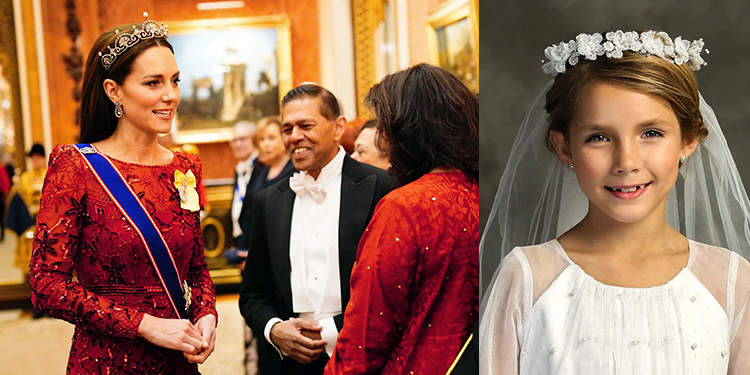
In addition to their symbolic significance, pearls are often associated with specific qualities or traits. For example, they are commonly associated with purity and innocence, formed from a mollusk's natural defense mechanism. Pearls are also sometimes associated with wisdom and knowledge, as they are believed to promote mental clarity and insight. Finally, pearls are sometimes associated with prosperity and good fortune and are often used as a talisman or good luck charm.
How pearls are used in rituals and celebrations
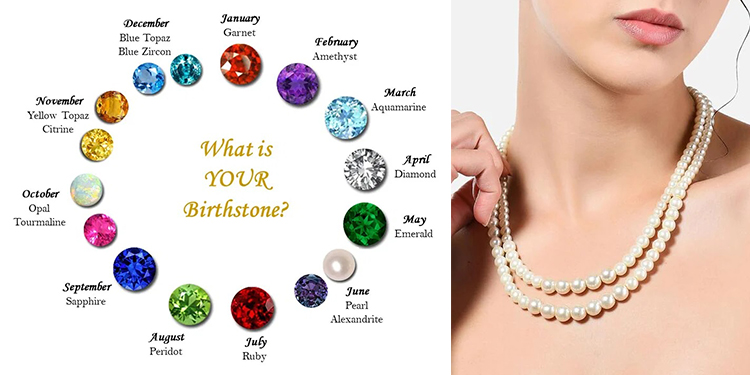
Pearls are used in a variety of rituals and celebrations around the world. In some cultures, for example, pearls are included in wedding ceremonies as a symbol of purity and love. In Hinduism, pearls are often used in prayer beads or mala and are believed to have a calming and balancing effect on the mind and emotions. In some Native American cultures, pearls are used in medicine bags or as a symbol of healing.
Overall, the symbolism and meaning of pearls vary widely across cultures and traditions. However, they are often associated with qualities such as purity, wisdom, and prosperity and are believed to have a range of spiritual and metaphysical benefits. Whether worn as jewelry or used in rituals and ceremonies, pearls remain a powerful and meaningful symbol today.
June's Birthstone: The Pearl
Overview of the birthstone tradition
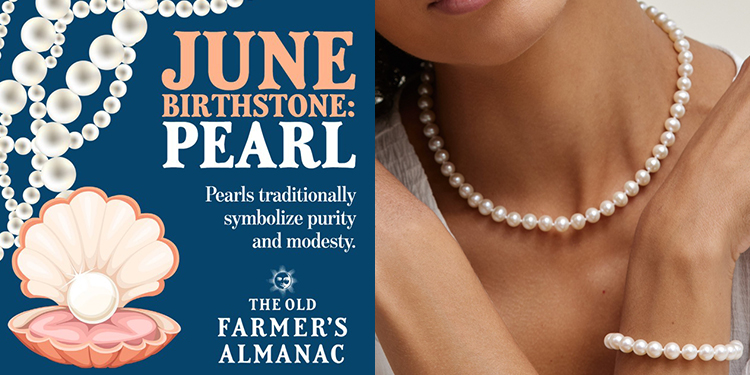
The concept of birthstones dates back to ancient times when people believed that certain gemstones had special powers and could bring good luck or protection to those born in a particular month. Over time, the idea of birthstones became more formalized, and today there is a specific gemstone associated with each month of the year.
Why pearls are the birthstone of June
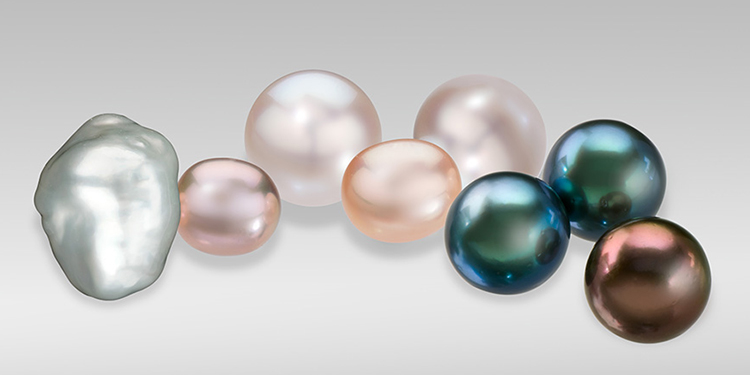
Pearls have been associated with June for centuries and are believed to have originated from an ancient Arabic myth. According to the myth, pearls were formed from dewdrops that fell into the ocean and were swallowed by oysters. Since dewdrops were associated with June, pearls became the birthstone for that month.
The significance of pearls as a birthday stone

As the birthstone for June, pearls are believed to bring special qualities and benefits to those born during that month. These include purity, wisdom, and emotional balance. Pearls are also associated with the zodiac sign of Gemini, which is typically represented by twins and is associated with duality, communication, and adaptability.
Overall, pearls make a meaningful and symbolic gift for those born in June and are often given to mark special occasions such as birthdays, weddings, and anniversaries. Their unique beauty and spiritual significance make them cherished gemstones that people worldwide love.
Pearls in Jewelry
The enduring appeal of pearls in jewelry

Pearls have been a popular choice in jewelry for centuries, thanks to their natural beauty and unique properties. Whether worn alone or paired with other gemstones, pearls have a timeless and classic appeal that never goes out of style. They are also versatile enough to be worn with a wide range of outfits, from formal evening wear to casual daywear.
Different types of pearl jewelry and their styles
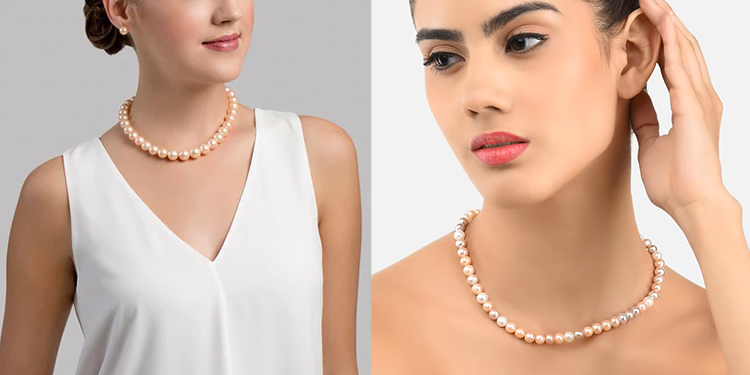
There are many different types of pearl jewelry, each with its unique style and charm. Some popular types of pearl jewelry include:
Pearl necklaces: A classic and elegant option, pearl necklaces are available in a wide range of styles, from simple single strands to elaborate multi-strand designs.
Pearl earrings: A versatile and timeless choice, pearl earrings can be worn with almost any outfit and come in a variety of styles, including studs, hoops, and dangle earrings.

Pearl bracelets: A delicate and feminine option, pearl bracelets are often paired with other gemstones and can be worn alone or stacked with other bracelets.
Pearl rings: A statement piece that is sure to get noticed, pearl rings come in a range of styles, from classic solitaires to bold, contemporary designs.
Famous examples of pearl jewelry worn by iconic figures throughout history
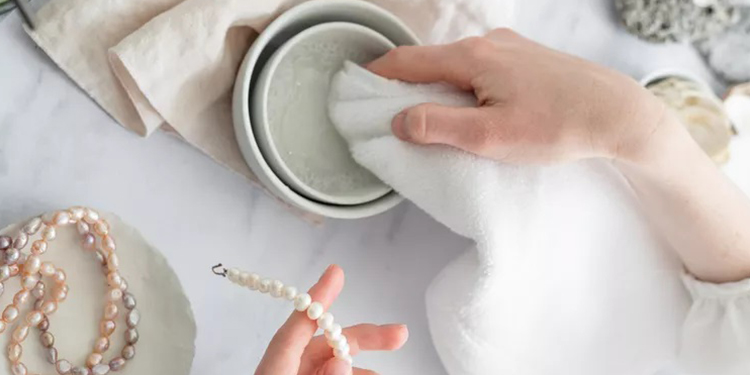
Throughout history, pearls have been worn by some of the most iconic figures in fashion and culture. From Cleopatra to Jackie O, pearls have been a symbol of style, elegance, and sophistication. Some famous examples of pearl jewelry include:
Audrey Hepburn wore the pearl necklace in "Breakfast at Tiffany's."
The triple-strand pearl choker worn by Princess Diana.
Michelle Obama wears the pearl necklace and earrings at the 2009 presidential inauguration.
Overall, pearls have a timeless and enduring appeal, making them a popular jewelry choice for people of all ages and styles. Whether worn as a simple strand or a bold statement piece, pearls will surely add elegance and sophistication to any outfit.
Caring for Pearls
How to properly care for and clean pearls

Pearls are delicate gemstones that require proper care and maintenance to keep them looking their best. Here are some tips for caring for your pearl jewelry:
Wipe your pearls with a soft cloth after wearing them to remove any dirt or oils.
Avoid exposing your pearls to chemicals, such as perfume or hairspray, as this can damage the surface of the pearl.
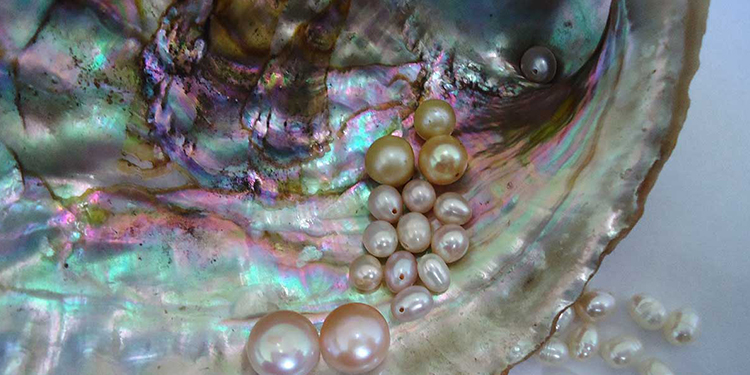
Store your pearls in a soft pouch or box, away from other jewelry, to prevent scratches or damage.
Have your pearls restrung every few years to prevent the silk cord from weakening.
Common myths about caring for pearls
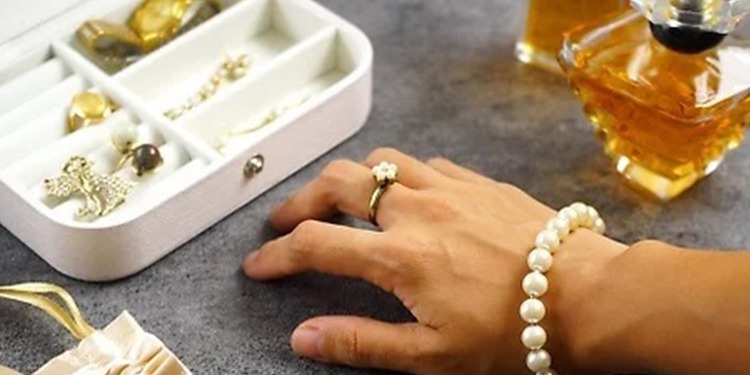
There are several common myths about caring for pearls that can do more harm than good. Here are some of the most common myths:
Myth: You should store your pearls in water.
Truth: Storing your pearls in water can weaken the silk cord and damage the surface of the pearl.
Myth: You should clean your pearls with soap and water.
Truth: Soap and water can damage the surface of the pearl and strip away its natural luster.
Myth: You should wear your pearls in the shower or while swimming.
Truth: Exposure to water can damage the surface of the pearl and weaken the silk cord.
Tips for storing and preserving pearl jewelry
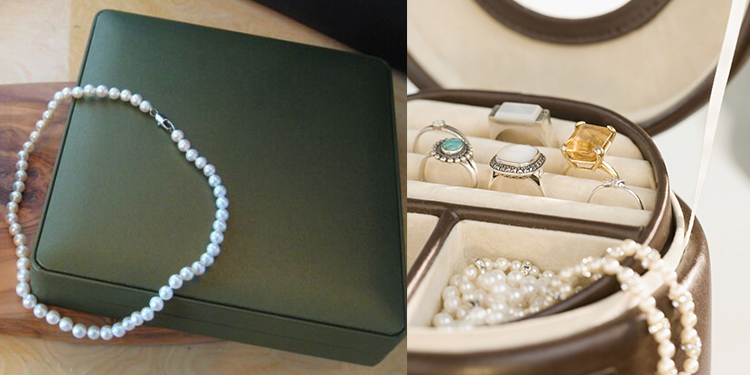
To preserve your pearl jewelry for years, storing it properly and taking precautions to prevent damage is important. Here are some tips for storing and preserving your pearl jewelry:
Store your pearls in a soft pouch or box, away from other jewelry, to prevent scratches or damage.
Avoid exposing your pearls to extreme temperatures or humidity, as this can damage the surface of the pearl.
Keep your pearls away from direct sunlight, which can cause them to fade or discolor over time.

Avoid wearing your pearl jewelry when doing activities that could damage the surface of the pearl, such as gardening or playing sports.
With proper care and maintenance, your pearl jewelry can last for many years and remain a cherished piece of your jewelry collection.
Conclusion
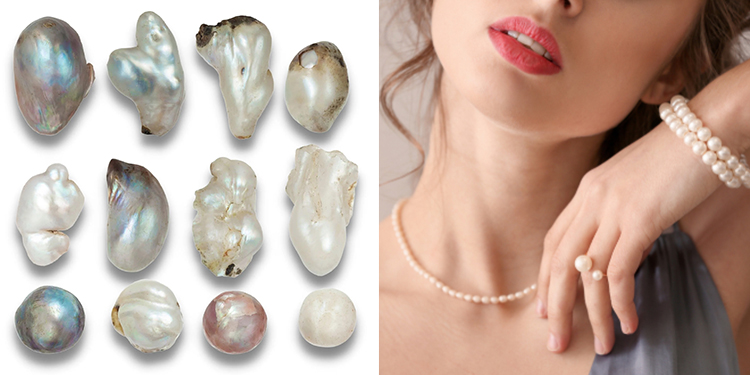
Pearls are a gemstone that has captivated people's imaginations for thousands of years, thanks to their natural beauty and rich cultural significance. From ancient civilizations to modern-day fashion, pearls have played an important role in human history and have been associated with purity, wisdom, and prosperity.
As the birthstone for June, pearls hold a special place in the world of gemstones and are believed to bring special qualities and benefits to those born during that month. They are also a popular choice in jewelry, thanks to their timeless elegance and unique charm.
Whether you're a pearl enthusiast or just learning about these captivating gems, we hope this article has given you a deeper understanding of their significance and enduring appeal. From their formation and symbolism to their use in jewelry and care and maintenance, there is much to appreciate about the world of pearls. So, whether you're looking to add a new piece of pearl jewelry to your collection or simply appreciate their beauty and history, we invite you to explore the world of pearls and discover their enduring magic.


Leave a Comment